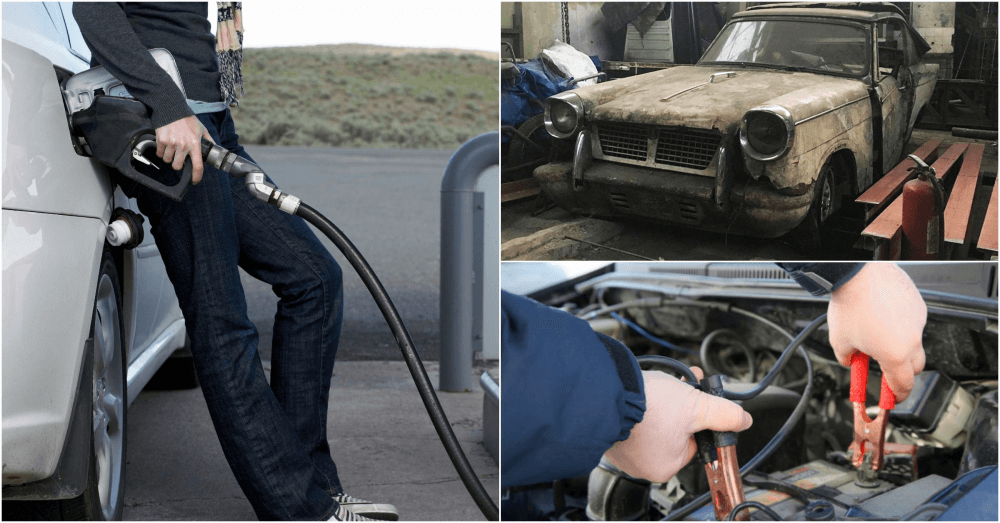What car myths still exist? Some people believe certain things that might have been true in the past but aren’t true today. Let’s learn about a few car myths.
Some strange beliefs about cars and the auto industry hat aren’t true but some people still allow them to force them into bad decisions concerning their vehicles. Some of these myths can get you into trouble, but others are simply strange and complete misconceptions concerning vehicles and good habits on the road.
Check out these car myths that some people still think are true.
Manual transmissions are more efficient than automatics
Before automatic transmissions had more gears than most manuals, this wasn’t a myth. Most people could shift gears in such a way as to make their vehicles more efficient than those with an automatic transmission. An automatic also adds a bit more weight than a manual, which was another factor. Modern vehicles use electronics and technology to shift faster and more efficiently than any human can. This makes automatic transmissions much more efficient than manual transmissions in modern vehicles. Still, some people like the engagement a manual transmission provides.
Larger vehicles are safer in crashes than smaller vehicles
This should be true, but it’s one of those car myths that’s a bit of a mixed bag. If a smaller vehicle hits a larger vehicle, the smaller model should crumple more and receive more damage, but it does depend on the type of accident. Larger vehicles are prone to tipping over when going around turns and curves, making them more likely to roll over than smaller models. Many smaller vehicles are smaller targets and have better safety features and fewer blind spots. This means a smaller vehicle could be safer in a crash; there are too many factors to consider.
Air conditioning is more fuel efficient than opening windows
The air conditioning system in every vehicle uses some gas, which decreases the fuel efficiency of any vehicle. Still, rolling down the windows increased drag in a vehicle, which puts you in a troublesome spot. Your air conditioning system is useful to keep you cool and comfortable, but if you want to save a bit of fuel, or you’re extremely low on gas, turn off the A/C and drive with the windows down.
You must warm up your engine when it’s cold out
Modern engines don’t need to be warmed up; this is one of the oldest car myths out there. There was a time when this was necessary to make sure the oil warmed up and circulated, but with fuel injection, this is unnecessary. In fact, the best thing for your car is to start it and start driving. This will circulate the oil faster and warm up your car much faster and better than allowing it to idle in your driveway.
Hybrid cars are slower than traditional vehicles
Early hybrid models were slower than standard models, but that’s no longer the case. This was the same for early EVs, which could barely make it out of your driveway but can now drive hundreds of miles between charges. Hybrid models are becoming much more popular than ever before, making them excellent counterparts to gas-powered vehicles. Hybrid technology ha come a long way and some hybrids are now more powerful than their more traditional counterparts.
EVs are more likely to catch fire than traditional cars
It seems like every time a Tesla is in a crash, it catches fire and burns to a crisp, but this is another one of those car myths that simply isn’t true. Automakers build their cars to protect the battery compartment from being damaged, and they do the same for the gasoline tank in a traditional car. EVs pose no more risk of catching fire than gas-powered vehicles, and fires can happen in both types of vehicles.
Dirty vehicles are more fuel-efficient
If dirt and dust fill up the cracks and crevices on a vehicle, it should reduce the drag, right? Wrong! When tested, this myth was quickly debunked. In fact, a very dirty car reduces fuel economy figures significantly, with the negative effects reaching as much as 10% compared to a clean car. Automakers perform extensive tests to ensure cars are as efficient as possible when they leave the factory. The added weight and clogging of areas where air usually moves can slow down some functions of a vehicle and cause it to be much less efficient.
These car myths are debunked and shouldn’t be shared as fact. Still, some people still believe most of them.
